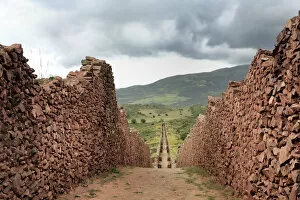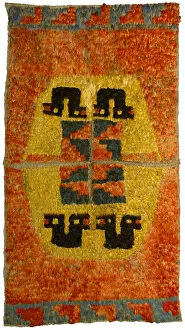Huari Collection
"Huari: Unveiling the Ancient Marvels of Piquillacta Archaeological Site in Quispicanchi
All Professionally Made to Order for Quick Shipping
"Huari: Unveiling the Ancient Marvels of Piquillacta Archaeological Site in Quispicanchi, Peru" Step back in time and immerse yourself in the captivating world civilization at the remarkable Piquillacta archaeological site. This ancient city, nestled amidst the breathtaking landscapes of Quispicanchi, Peru, holds secrets that date back to A. D. 700-800. As you explore this historical treasure trove, be prepared to encounter extraordinary artifacts that showcase the artistic prowess of unknown creators. One such masterpiece is a head fragment from a large ceremonial jar, which offers a glimpse into Huari's rich cultural heritage. Delving deeper into their craftsmanship, discover ear ornaments dating from A. D. 400-800. These intricate adornments speak volumes about their sophisticated jewelry-making techniques and exquisite taste. Another remarkable find is a vessel adorned with abstract motifs and featuring a meticulously modeled head. Created between A. D. 700-900, it serves as an intriguing testament to Huari's mastery over pottery artistry. The allure continues with an awe-inspiring gold plume ornament found on South Coast - an emblematic symbol of status and prestige during c. 700-1000. Huari's influence extended beyond precious metals; textiles played a significant role too. Feast your eyes upon a tunic boasting profile heads and stepped frets intricately woven using cotton and camelid fiber between c. 650-800. Witnessing the fusion of cultures within Huari civilization becomes evident through discoveries like the Nazca-Huari feather tunic crafted from cotton adorned with vibrant feathers (c. 700-1100). It exemplifies their ability to blend diverse elements seamlessly. Head fragments from large ceremonial jars repeatedly emerge throughout this journey into Huari's past – each one offering its own unique story waiting to be unraveled by curious minds like yours.










